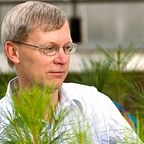How the Food Chain in a Forest Ecosystem Works
The food chain in a forest ecosystem is a complex web of interactions among various organisms. It represents the flow of energy and nutrients through the different trophic levels, from producers to consumers and decomposers. Here’s a simplified explanation of how the food chain works in a forest ecosystem:
1. **Producers (Autotrophs):**
— **Plants:** In a forest, the primary producers are usually plants, such as trees, shrubs, and grasses. These plants use sunlight, water, and carbon dioxide through photosynthesis to produce their own food (usually glucose) and release oxygen as a byproduct.
2. **Primary Consumers (Herbivores):**
— **Herbivores:** Animals that feed directly on plants are called herbivores. In a forest ecosystem, these can include insects, deer, rabbits, and other small mammals. They obtain energy by consuming plant material.
3. **Secondary Consumers (Carnivores and Omnivores):**
— **Carnivores:** Animals that eat other animals are carnivores. In a forest, these can include predators like foxes, wolves, and big cats that prey on herbivores.
— **Omnivores:** Some animals in the forest are omnivores, meaning they consume both plant and animal matter. Examples include bears, raccoons, and some bird species.
4. **Tertiary Consumers (Top Predators):**
— **Top Predators:** In some cases, there may be tertiary consumers at the top of the food chain. These are animals that have few or no natural predators. In a forest, this could be large predators like wolves or big cats.
5. **Decomposers:**
— **Decomposers:** Decomposers play a crucial role in recycling nutrients in the ecosystem. They break down the remains of dead plants and animals into simpler substances, returning essential nutrients to the soil. Examples include fungi and bacteria.
6. **Detritivores:**
— **Detritivores:** These organisms feed on detritus, which includes dead plants and animals. They help break down organic matter into smaller particles, making it easier for decomposers to do their job. Examples include earthworms and certain insects.
The flow of energy in this system is unidirectional, moving from producers to consumers and eventually to decomposers. As organisms consume each other, energy is transferred through the food chain. It’s important to note that in reality, food webs are more common than simple linear food chains, as many organisms have multiple food sources and are part of complex, interconnected relationships within the ecosystem. Additionally, disturbances and adaptations in the ecosystem can influence the dynamics of the food chain.
